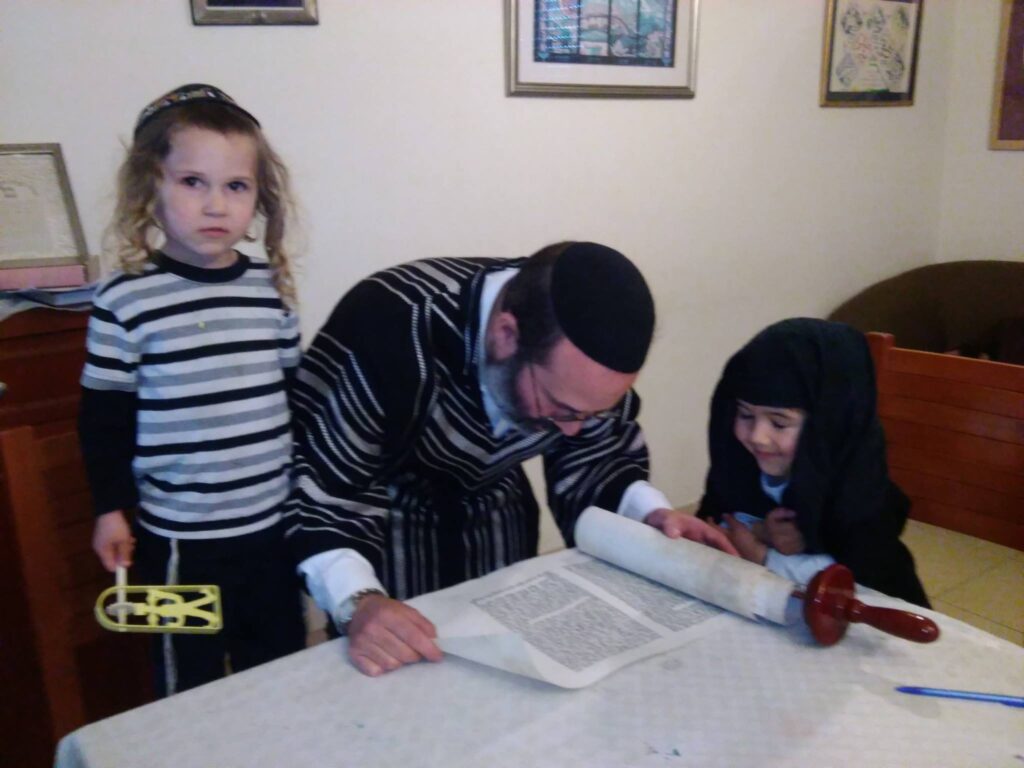Last night (15/2/22), thanks the wonderful hospitality of Esther Diamond Gold Silver and her flat-mates, OSA had a festive and joyous Shushan Purim Katan event in Jerusalem. The mixed group of 30 people enjoyed singing, dancing, Rav Shalom’s Chulant and lots of Adar simcha. The obligation to celebrate and feast in honor of (Shushan) Purim Katan was definitely fulfilled lemehadrin.

We understand the a practical reason to have an extra month (Adar) every few years in order to make up the difference between the Solar and Lunar calendars, but what’s the deeper significance of having two Adars and celebrating two Purims, Katan and Gadol, in one year?
Rav Dovid of Sochatchov ZT”l, who died in the Warsaw Ghetto in 1942, writes in his work “Chasdai Dovid” that there are two major themes of Purim.
As the 3rd chapter of Book Esther teaches us, Haman attempted to wipe out the entire Jewish People. He convinced the Persian King Achashverosh to partner with him in order to execute the genocide. Ultimately, Haman was not only unsuccessful in his wicked mission, it brought about his own demise. He along with his ten sons were hung. Simultaneously, the Jews were given authorization to eradicate their enemies who participated in the plot against them. The holiday of Purim was established on the day after the Jewish victory in battle. It was enacted as a celebration of the Jewish People’s salvation in the face of annihilation.

The second major theme of Purim is the spiritual elevation that took place after the victory over Haman. The Gemara in Shabbat 88a teaches us that the Purim deliverance brought the Jewish people to willingly receive the Torah out of love. Prior to Mordechai and Esther, the period from Sinai until the Persian exile was a time in Jewish history marked by duty and obligation. The relationship between God and the Jewish People at that time can be understood as a contractual agreement. It was only as a result of the Purim story that the Jewish People ascended to the higher level of joyful acceptance of Torah and Mitzvot.
The holiday of Purim is a celebration and “thanksgiving” of these two major themes, our physical triumph in the wake of extermination and a rise to a higher spiritual plateau. Since the holiday is only twenty four hours and filled with many practical obligations, it is challenging to fully appreciate both of these fundamental themes in one short day.
As such, explains the Rebbe, there is a need every two or three years to give each of these separate themes an opportunity for hyper focus, independent recognition and deeper internalization. The actual observance of Purim in Adar Bet, a day that is filled with practical mitzvot and physical activity, is time to emphasize the physical triumph. Purim Katan in Adar Aleph, a day filled with ruach but does not have any unique commandments associated with it, is a time to celebrate our loving ang joyous acceptance of Torah.
Every Jew, usually at the adolescent stage, must go through a phase where they feel obliged to keep Torah and Mitzvot. This is absolutely necessary and an true expression of what Torah is by definition. At the same time, a Jew must also graduate the initial phase and reach the higher level of willful embrace.
How do we relate to God and the commandments? Have we attained a deeper, more loving relationship with God as we become more mature? Do we study Torah out of joy or out of basic obligation?
A second Adar is welcomed opportunity to ask ourselves these important questions.



0 Comments